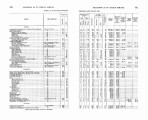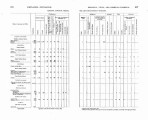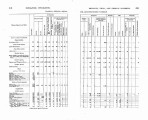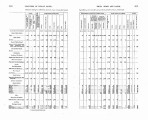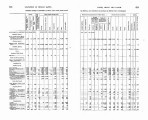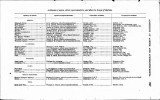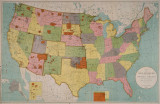| OCR Text |
Show COMMISBIONER OF INDIAN AFFAIRS. 49 Employees in Government Indian achoo1s.-The various positions in the school service are divided asfollowe: Supervisors, 7 white; superintend-ents, ill white; assistant superintendents, 16 white and 1Indian; clerks, 48 whiteaud22Indian; physicians, 16 whiteandl Indian; disciplinarians, 43 white and 13 Indian; teachers, 401 white and 61 Indian; kindergart-nera, 45 white; manual training teachers,.5 white; matrons and honse-keepers, 208 white and 40 Indian; assistant matrons, 103 white and 52 Indian; nurses, 30 white and 1 Indian; seamstresses, 102 white and 45 Indian; laundresses, 84 whiteand 58 Indian; industrial teachers, 63white and 40 Indian; cooks and bakers, 143 white and 64 Indian; farmers, 43 white and 19 Indian; blacksmiths and carpenters, 70 white and 12 Indian; engineers, 49 white and 23 Indian; tailors, 8 white and 8 Indian; shoe and harnessmakers, 16 white and 17 Indian; gardeners, 15 white and 3 Indian; dairymen, 7 white; assistants, 1 white and 33 Indian; superintendents of industries, 2 white; teachers of agriculture, 4 white; day school inspectors, 2 white; miscellaneous positions, 58 white and 82 Indian. Total, 2,295, being 1,700 white and 595 Indian. Appropriations for school purposes.-The appropriations for Indian school purposes made by Congress for the past twenty-eight years, showing increase or decrease over ewh preceding year, are given in this table: TABLE NO. 12.-Annual appropriations made by the Government from and including the jbwl year 1877 for the support of Indian schools. Yea,'. Year. Appmpris, Per cent Indian school service institutes.-Under the authority of the Secre-tary of the Interior institutes were held as follows: Standing Rock Agency, N. Dak.; Rosebud Agency, 6. Dak.; Fort Berthold Agency, N. Dak.; Fort Totten, N. Dak.; and the general meeting of the con-gress of Indian educators at St. Louis, Mo. In view of the fact that many of the schools are located in isolated parts of the country, Indian school employees are denied the privilege of attending ediicational meetings whereby they would come in contact with the best educa-tional thought of the day, and the bringing together of those engaged 1 0 1 7 0 4 5 4 |






















































































































































































































